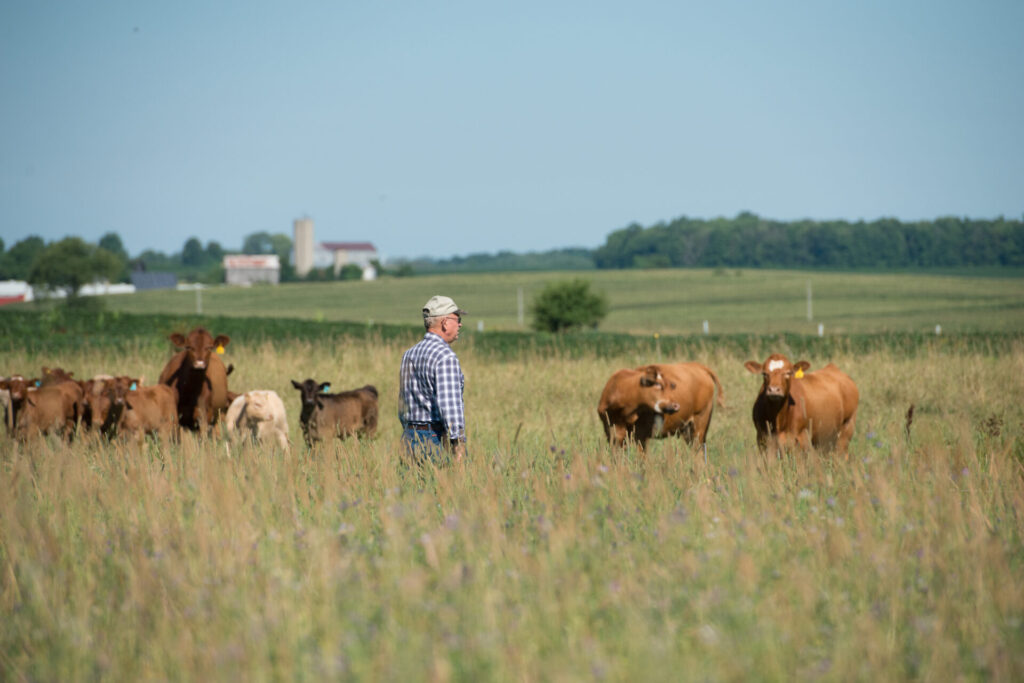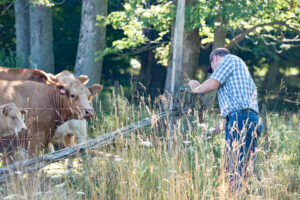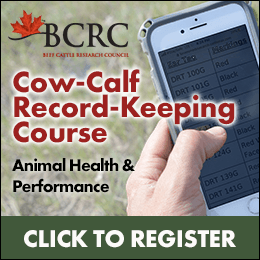Record Collectors Unite -- There's Power in Numbers 🎙️

This article written by Dr. Reynold Bergen, BCRC Science Director, originally appeared in the August 2023 issue of Canadian Cattlemen magazine and is reprinted on BeefResearch.ca with permission of the publisher.
CLICK THE PLAY BUTTON TO LISTEN TO THIS ARTICLE:
Ranching without records is like travelling without a map. Records tell you where you’ve been and where you are. Connecting those dots tells you where you’re heading. If you don’t like that destination, records can help decide how to adjust your management. When producer records are combined, you can tell where you are with respect to the overall industry and how the industry is progressing over time.
Industry data is critical for research, too. In 2012 the BCRC held a research priority workshop with cattle producers, researchers, extension staff and veterinarians. Feedlots are very data driven, work closely with large consulting veterinary practices and follow somewhat similar management practices. Their top concerns were dialed-in on bovine respiratory disease, lameness and acidosis. The cow-calf group had a much harder time. Limited record keeping, tremendous regional variation in calving seasons, climate, grazing management, winter feeding, etc., and less regular contact with veterinarians meant that information on the sector’s leading animal health challenges was lacking.
What They Are Doing
John Campbell and Cheryl Waldner from the Western College of Veterinary Medicine created a Western Canadian Cow-Calf Surveillance Network in 2013 and expanded it into the Canadian Cow-Calf Surveillance Network in 2018. They work with veterinary schools, private veterinarians and 175 cow-calf producers to quantify the health and management challenges and opportunities from coast-to-coast. They are looking for more participants. The Network offsets sample collection costs and reimburses producers for participating in surveys and providing access to their cattle and records.

What They Are Learning
You’ve probably heard about some of their findings in John’s Beef Cattle Health and Nutrition Podcast or read about them in Canadian Cattlemen magazine or other ag publications. In the last year alone, they’ve learned:
- Since over-the-counter antibiotic sales ended in 2018, cow-calf producers have mostly used antibiotics to treat diarrhea (newborns) respiratory disease (calves) and lameness (adults). Most producers treat less than 5% of the herd.
- Vaccination rates have risen. 92% of cows and replacement heifers and 72% of bulls were given the core viral vaccines (IBR, BVDV, PI3 and BRSV). 92% of producers gave suckling calves the core viral vaccines, but only 47% provided a booster before weaning. Clostridial vaccines were used more often in Western (68% of cows, 57% of bulls, 95% of calves) than Eastern Canada (33% of cows and bulls, 70% of calves).
- Johne’s disease was present in approximately 1% of beef cows and 5 to 18% of herds (depending on the test used). The fecal PCR test was better at detecting positive (but not subclinical) animals than the blood test.
- Bovine leukosis virus was identified in 4.9% of cows and 28.3% of herds.
- BVD virus was identified in only 0.2% of weaned calves tested.
- Leptospirosis was identified in 1% of weaned calves.
This information has helped the participating producers and their veterinarians re-evaluate their management. For instance, trace minerals like copper, molybdenum and selenium impact animal health, treatment rates, productivity and fertility.
- Copper deficiency was most common in southeast Saskatchewan. Overall, 64% (West) and 60% (East) of Canadian beef cows had less than adequate copper.
- High molybdenum (which makes copper deficiency even more likely) was most likely in Alberta, southern Saskatchewan, Manitoba and Quebec and impacted 14% (West) and 15% (East) of cows.
- Selenium deficiency was most common in Western Alberta and Eastern Canada. Overall, 34% (West) and 73% (East) of Canadian beef cows had less than adequate selenium.
- These deficiencies could not be predicted based on soil-zone alone.
- Most producers feed free-choice minerals. Some cows eat these and others don’t, meaning intake isn’t guaranteed.
- Many producers are likely unaware of these (and other) nutrient deficiencies, as only 61% currently test their feed, 18% currently test their water and 37% currently use a nutritionist.
What’s Coming Next?
Over the next five years this team will study herds of varying sizes in Eastern and Western Canada to understand how calving season (winter vs. early vs. late spring) and winter management (extensive grazing vs. fed in confinement) affect pregnancy rates, calving percentage, newborn calf survival and weaning rates. The goal isn’t to find a one-size-fits-all management strategy to optimize productivity. Instead, the goal is to identify how these various factors interact to impact reproductive performance. This will help cow-calf producers in all regions of Canada make more informed and economically optimal management decisions for their herd size, production system and geographical situation.
So, What Does This Mean… to You?
Knowing which disease and nutritional problems are most common help both industry and government focus our research and extension activities on the biggest animal health and welfare challenges facing the most producers.
Producers who participate in the Surveillance Network get to interact with their veterinarian more regularly at no extra cost, while learning how their herd is performing compared to others in the network. For instance, the studies described above gave participants detailed information about how their nutritional management aligns with their herd’s trace mineral needs. In some cases, they got a heads-up on some potentially costly problems before they occurred, and in other cases it helped them overcome long-standing health and reproductive problems.
Bottom line: If you have at least 40 cows, good records and are willing to participate in applied, producer-focused research, consider contacting Cheryl Waldner before the end of the summer.
If you’d like to start or improve your record keeping skills, have a look at the BCRC’s Cow-Calf Record-Keeping Courses.
The Beef Cattle Research Council is funded by the Canadian Beef Cattle Check-Off. The BCRC partners with Agriculture and Agri-Food Canada, provincial beef industry groups and governments to advance research and technology transfer supporting the Canadian beef industry’s vision to be recognized as a preferred supplier of healthy, high-quality beef, cattle, and genetics.
Click here to subscribe to the BCRC Blog and receive email notifications when new content is posted.
The sharing or reprinting of BCRC Blog articles is typically welcome and encouraged, however this article requires permission of the original publisher.
We welcome your questions, comments and suggestions. Contact us directly or generate public discussion by posting your thoughts below.
